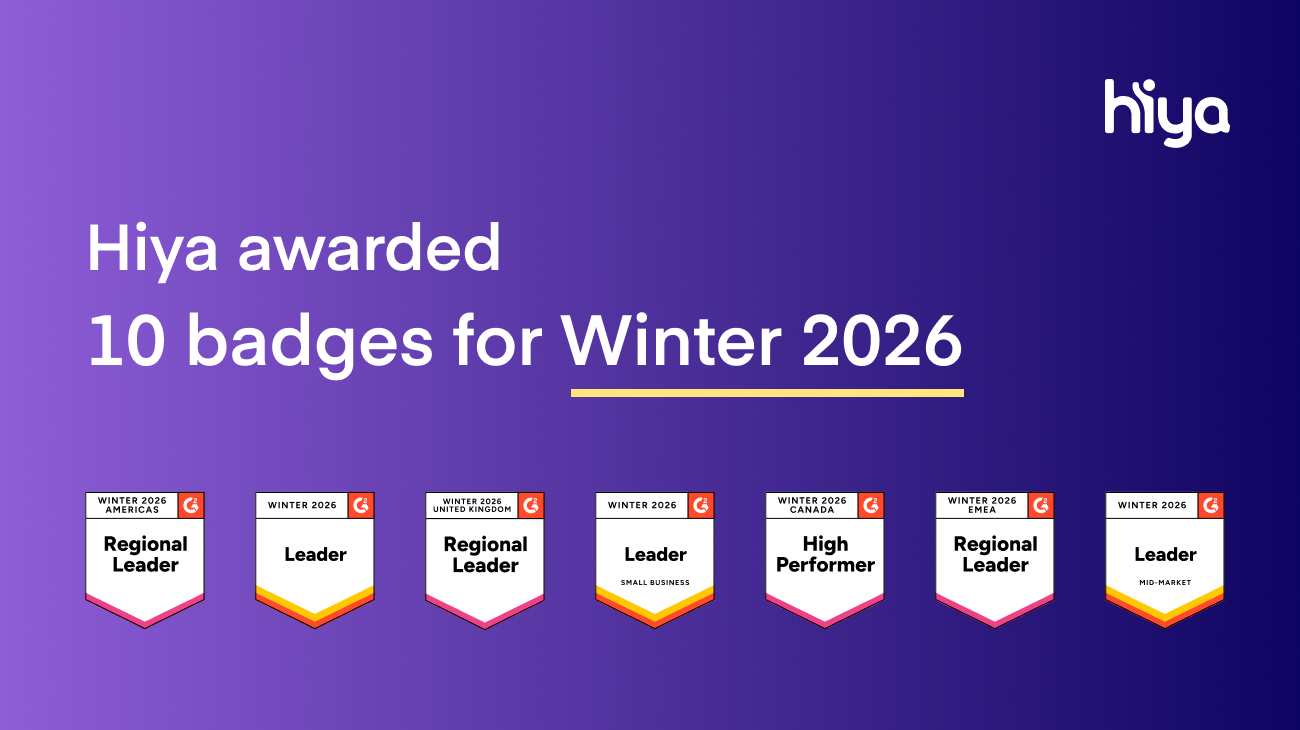.jpg)
Consumers love the convenience of online banking and mobile apps when it comes to simple financial transactions like checking account balances and transferring between accounts. But when it comes to more complex transactions — such as wealth management, mortgages, loans, and investments — nothing beats the human touch. For these types of transactions, in which significant assets are involved, consumers want to speak to a real human being who can help them resolve their issues quickly and accurately.
According to Hiya’s 2023 State of the Call report, when it comes to consumer communication preferences with financial services companies, 37% of consumers prefer a voice call, 23% prefer email and 5% prefer text.
While consumers prefer the phone for more complex financial transactions, they also may be wary of the caller. In fact, the 2023 State of the Call revealed that 87% of consumers believe an unidentified call is or could be fraudulent.
When it comes to spoofed calls - where the incoming phone number or caller ID name was illegally changed to imitate that of a legitimate company - and banks and financial institutions are prime targets. . . Why? When scammers pose as a financial institution someone already does business with, the consumer is more likely to have their guard down and give access to their personal information, providing a huge return for the scammer.
How can financial services companies meet and exceed customer expectations by creating a personalized - and secure - interaction when contacting them via phone?
Here are 4 best practices:
- Avoid publishing numbers publicly – Scammers will often spoof phone numbers that are publicly available on a company’s website If you do have a publicly available number, mark it as a Do Not Originate (DNO) line, which flags to carriers that the number is used for inbound calls only. The analytics engines that power carriers call protection services such as Hiya Protect, can detect outgoing traffic on these lines and flag them as fraud before reaching the consumer.
- Use dedicated lines for each business unit – Using a single line for multiple business units makes it harder for consumers to understand if their financial services company is calling them or a bad actor. Earn customer trust by dedicating specific numbers to specific functions, such as one line for notifying customers of suspicious activity on their credit card and another line to respond to inbound inquiries for new credit cards.
- Monitor your agents and contact center metrics frequently – Ensure your calls have the best chance of a successful outcome by closely monitoring contact center analytics, as well as reviewing calls if you have invested in speech analytics technology. Doing this gives financial services companies the ability proactively monitor and manage issues before they arise, as well as dig deeper to understand the root cause of issues, such as:
Short call durations: Is this because of the agent or is it because of your dialer technology?
Low answer rate: A high outbound call volume and a low answer rate can indicate a number is flagged as spam.
- Register your phone numbers with Free Caller Registry – For companies in the United States, registering numbers on FreeCallerRegistry.com enables entities making legitimate outbound phone calls to submit their data to the three significant providers of call management services supporting the major U.S. wireless carriers via a standard, centralized experience. That information is sent directly to each of the three analytics engines. Each analytics engine (including Hiya for AT&T) vets the information and directly follows up with the registrant.
Financial institutions seeking to provide world-class customer experiences can maintain better customer relationships and loyalty by building trust and delivering great customer experiences in every interaction, no matter what channel.
Want to see what customers see when you call? Get a complimentary Call Inspection to see how calls show up when across devices and carriers and talk to one of our experts about how branding could impact your outbound calls.



